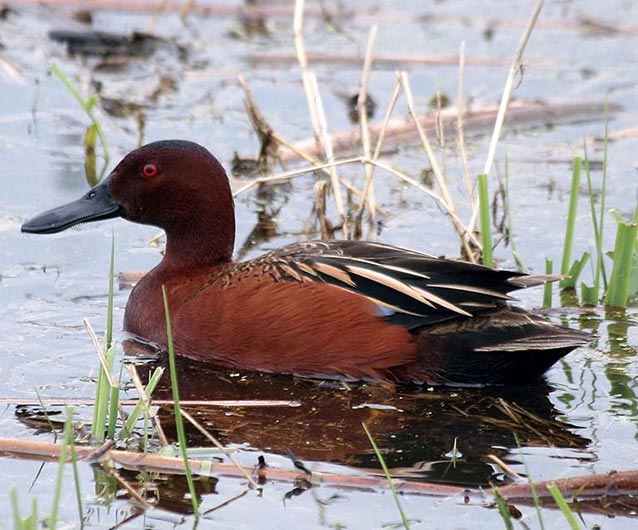A variety of books and online resources are available to those seeking more information on the distribution and life history of bird species in the Southwest and beyond.
Sources of Distribution and Life History Information

Photo by Brad Manchas
Field Guides
There are many good field guides for birds ranging from general guides to North American birds to ones specializing in particular geographic areas or taxonomic groups. Here are a few sources of information on available field guides:
The American Bird Conservancy – URL: http://www.abcbirds.org/
The American Birding Association – URL: http://www.aba.org/
The Cornell Lab of Ornithology – URL: http://www.birds.cornell.edu/
Comprehensive Species References
Life Histories of North American Birds – Arthur Cleveland Bent.
Arthur Cleveland Bent (1866-1954) was one of America’s greatest ornithologists. Bent and his collaborators present comprehensive information about courtship, nesting, eggs, young, plumages, food, behavior, voice, enemies, and more in a twenty-one volume series (1919-1968) entitled Life Histories of North American Birds.
Birds of North America – American Ornithologists’ Union, the Cornell Laboratory of Ornithology and the Philadelphia Academy of Natural Sciences.
Birds of North America is probably the most comprehensive, authoritative and up-to-date resource available on the biology of North American birds. The print version was the culmination of a joint 10-year project by the American Ornithologists’ Union, the Cornell Laboratory of Ornithology and the Philadelphia Academy of Natural Sciences. An online version is also available and described below.
Electronic Resources
Birds of North America Online – URL: http://bna.birds.cornell.edu/bna/
The Birds of North America (BNA) is a comprehensive reference covering the life histories of North American birds. Edited by Drs. Alan Poole and Frank Gill, this series provides detailed scientific information (18 volumes, 18,000 pages in total) for each of the 716 species of birds nesting in the USA and Canada.
eNature – URL: http://www.enature.com/fieldguides/
eNature was initially launched in February 2000 and was acquired by the National Wildlife Federation in 2001. NWF handed over management of eNature.com to the Shearwater Marketing Group (a privately-held company providing marketing services to both non-profit and private sector clients, focusing primarily on wildlife and nature) in 2007. The site’s core content consists of wildlife information about almost 6,000 individual species and is the same data set used to create the printed Audubon Field Guides.
USGS, Patuxent Bird Identification InfoCenter – URL: https://www.mbr-pwrc.usgs.gov/infocenter/
This site presents photographs, songs, videos, identification tips, maps, and life history information for North American birds.
SORA: Searchable Ornithological Research Archive – URL: https://sora.unm.edu/
The SORA project is an open access electronic journal archive and is the product of a collaboration between the American Ornithologists’ Union, the Cooper Ornithological Society, the Association of Field Ornithologists, the Wilson Ornithological Society, and the University of New Mexico libraries and IT Department. This archive provides access to an extensive Ornithological literature of international scope and detailed material documenting the history of ornithology in North America over the last 120 years. The content of this site includes the following titles: The Auk (1884-1999), The Condor (1899-2000), The Journal of Field Ornithology (1930-1999), The North American Bird Bander (1976-2000), Pacific Coast Avifauna (1900-1974), Studies in Avian Biology (1978-1999), and The Wilson Bulletin (1889-1999). Also available with browse-only capability is Ornithologia Neotropical.
Literature Cited
Bock, C. E. and Z. F. Jones. 2004. Avian habitat evaluation: Should counting birds count? Frontiers in Ecology and the Environment 2:403–410.
Burkett, V. R., D. A. Wilcox, R. Stottlemyer, W. Barrow, D. Fagre, J. Baron, J. Price, J. L. Nielsen, C. D. Allen, D. L. Peterson, G. Ruggerone, and T. Doyle. 2005. Nonlinear dynamics in ecosystem response to climatic change: Case studies and policy implications. Ecological Complexity 2:357–394.
Holmes, J. A. and M. J. Johnson. 2007. Draft: The structure and functioning of habitat-based bird communities of the Southern Colorado Plateau Network – conceptual models to inform long-term ecological monitoring. Version 1.1 (October 9, 2007). Unpublished report to Lisa Thomas, NPS, SCPN, Flagstaff, AZ.
Järvinen, A. 1994. Global warming and egg size of birds. Ecography 17:108–110.
MacKenzie, D.I., J.D. Nichols, G.B. Lachman, S. Droege, J.A. Royle, and C.A. Langtimm. 2002. Estimating site occupancy rates when detection probabilities are less than one. Ecology 83:2248-2255.
Mosconi, S. L. and R. L. Hutto. 1981. The effect of grazing on the land birds of a western Montana riparian habitat. In: Proceedings of the wildlife-livestock relationships symposium, Coeur d’Alene, Idaho, April 20-22, 1981.
Parmesan, C. and G. Yohe. 2003. A globally coherent fingerprint of climate change impacts across natural systems. Nature 421:37-42.
Price, J. T. and T. L. Root. 2005. Potential impacts of climate change on neotropical migrants: Management implications. USDA Forest Service Gen. Tech. Rep. PSW-GTR-191.
Root, T.L. 1988. Energy constraints on avian distributions and abundances. Ecology 69:330–339.
Root, T. L. and S. H. Schneider. 2002. Climate change: Overview and implications for wildlife. From Schneider, S. H. and T. L. Root (eds), 2002: Wildlife responses to climate change: North American case studies, Washington D.C.: Island Press, 437 pp.
Scott, M. L., S. K. Skagen, and M. F. Merigliano. 2003. Relating geomorphic change and grazing to avian communities in riparian forests. Conservation Biology 17(1):284-296. Stokstad, E. 2007. The case of the empty hives. Science 316:970-972.
Prepared by Patty Valentine Darby, Southern Plains Network Inventory and Monitoring Program, 2009.
Part of a series of articles titled Birds of the American Southwest.
Last updated: February 3, 2015
